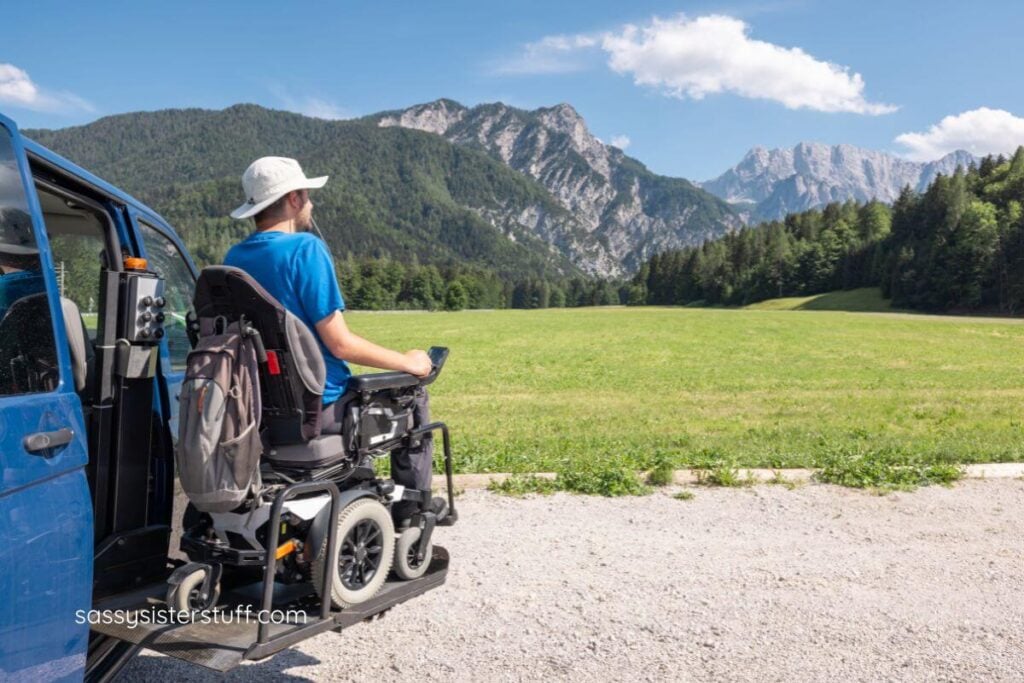5 Common Types of Mobility Devices and How to Choose the Right One
Mobility devices help people maintain their independence and move around with a little more confidence. If someone has just had surgery, deals with a long-term chronic condition, or is noticing age-related mobility changes, the right mobility device can be a game-changer. But sorting through all the choices—and figuring out which ones actually make sense for you or your loved ones—takes a little bit of knowledge.

Common Types of Mobility Devices and Who Can Help You Choose the Right One
Getting the right mobility device starts with being honest about your health condition and your daily routine. Someone who feels a little bit unsteady from time to time may need something simple. But if walking is turning into a challenge, a serious supportive device should be considered.
We are going to discuss these five common types of mobility devices in this article:
- Canes
- Walkers
- Manual Wheelchairs
- Power Wheelchairs
- Mobility Scooters
A good physical therapist or someone who specializes in mobility devices can help you find a solution that fits your strength and mobility level, your posture, and your living environment. Check the Marc’s Mobility store or any other local mobility device stores, where you can share what you’re looking for and test different devices before purchase. These professionals can perform a mobility assessment, recommend which features to consider, and teach you how to operate the medical device.
Canes: The Go-To for a Little Extra Balance
Canes might look simple, but they aren’t outdated. They give people that extra touch of support when they need a bit of balance while walking. Modern canes come with solid handles and adjustable heights, and they’re usually light enough for pretty much anyone to carry.
The Different Types of Canes
- Single-tip canes: These are the classic version—just a straight stick with one tip. If balance is the only concern, they’re easy to use and work indoors or outside.
- Quad canes: These have four little legs at the base. That extra ground contact adds stability, which is a popular option for those who are recovering from a stroke or dealing with neurological conditions that affect balance.
Getting the right cane isn’t just about picking whatever’s in stock. You need to think about grip strength, how stable you feel when standing, and your walking pattern. The cane should sit at a height where your elbow bends just a bit—it saves your joints and helps everything move more naturally. While canes offer limited support, they can be a stepping stone or a complementary device during rehabilitation.

Walkers: Extra Help When a Cane Is Not Enough
If you need more than what a cane can do, a walker steps into the game. They make a difference for someone who needs full-body support, or when you want to take pressure off their legs. A walker is an effective option for joint surgery, arthritis, or even Parkinson’s.
Standard vs. Wheeled Walkers
A standard walker has no wheels, just four legs. You pick it up for every step, so you actually need a decent amount of arm strength. These walkers are common in hospitals, especially right after surgery.
Wheeled walkers (rollators) come with two or even four wheels, so you’re rolling the device instead of lifting. Most models feature hand brakes and a spot to sit down, plus a basket for your stuff.
Picking a walker depends on where you’ll actually use it, how much support you want, and if you like the idea of having a seat for breaks. Rollators are great for getting around outside and for people who want their walks to feel smoother, while the plain version works well indoors during recovery.
Manual Wheelchairs: Versatility for Long-Term Needs
A manual wheelchair is light, compact, and meant to be pushed by a caregiver. Standard manual wheelchairs have bigger rear wheels so users can roll themselves if they have enough upper-body strength. Many models boast adjustable armrests, leg supports, and different cushioning setups to help with posture.
Picking a manual wheelchair mostly comes down to how much upper-body strength you have and how often you plan to use it. If travel is a big part of your life, a folding or lighter model might make sense. Comfort can’t be ignored either—the right seat setup can keep you sitting right and prevent pressure sores.

Power Wheelchairs: When You Need Full Support
Power wheelchairs step in when pushing a manual chair isn’t doable, or when someone really needs steady support all day. These medical devices run on batteries and use a joystick for steering, so moving around doesn’t take much physical effort at all.
Models can get pretty fancy: tilt-back seats, adjustable arm and leg rests, a detachable food tray, and a tougher suspension for off-road use. Power chairs are a strong option for people with neurological issues, spinal injuries, or severe muscle weakness.
If you’re considering a power wheelchair, you’ll want to measure your doorways, check how easily you can turn corners at home, and look at your floor surface. How long the battery lasts, how comfy the seat is, and how you’ll travel with it are more things to think through.
Mobility Scooters: Independence for Active Users
Mobility scooters work well for people who are still active but can’t manage long walks. You get a handlebar for steering, a cushioned seat, and either three or four wheels for stability. Most people use them outdoors for things like shopping or getting around in the community.
Three-wheel scooters are easy to turn and fit into tight spots—this is a nice choice if you’re indoors a lot. Four-wheel models are steadier if you stick to bumpy paths. Smaller travel scooters can be folded to fit in your car, while bigger, heavy-duty ones handle bigger weights and rougher terrain.
Choosing a scooter is about where you’ll use it (inside / outside), how you’ll transport it, the battery range, and max speed. You’ll also need some upper-body strength and good hand control to drive one safely.

Comparison Table: Mobility Devices at a Glance
Check out this comparison table for at-a-glance details about common types of mobility devices.
| Mobility Device | Best For | Support Level | Strength Required | Indoor / Outdoor |
| Cane | Mild balance issues | Low | Low | Both |
| Walker | Moderate stability needs | Medium-High | Medium | Indoor/Light Outdoor |
| Rollator | Active users needing rest options | Medium | Medium | Both |
| Manual Wheelchair | Limited walking ability | High | Medium-High | Both |
| Power Wheelchair | Severe mobility impairments | Very High | Very Low | Both |
| Mobility Scooter | Long-distance mobility challenges | Medium | Medium | Primarily Outdoor |
Conclusion: Common Types of Mobility Devices
Choosing any mobility device is a serious matter that requires some time for research. The right pick can really make a difference and help regain independence. The best choice matches what your body can do and what environment you live in. When a mobility device lines up with that, it’s not just equipment. It can be a golden ticket to more freedom, confidence, and a real sense of control over your own life.
I have had family members who have had to use all five of these mobility devices. They have had a variety of illnesses and diseases—specifically Alzheimer’s Disease, Multiple Sclerosis, Congestive Heart Failure, Diabetes, and broken bones. I discovered that it’s helpful to learn about all of mobility devices because patients will often move from one to another as their needs change. I hope this article has given you the knowledge you need to help your loved one.
For additional information about mobility and accessibility, visit these Related Articles:
- Freedom at Home: Making Your Elderly Parents’ Space Accessible
- Adaptive Clothing for Seniors: Where Functionality Meets Fashion
Be sure to bookmark this article so you have it available any time. Best wishes in your efforts to support your family members who have mobility issues!
Love to ALL! ~ Susan







